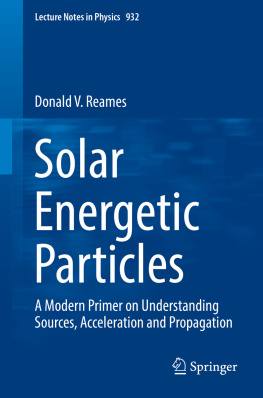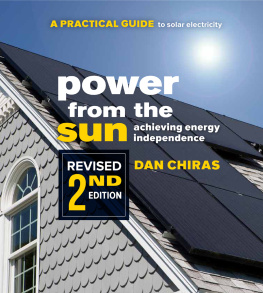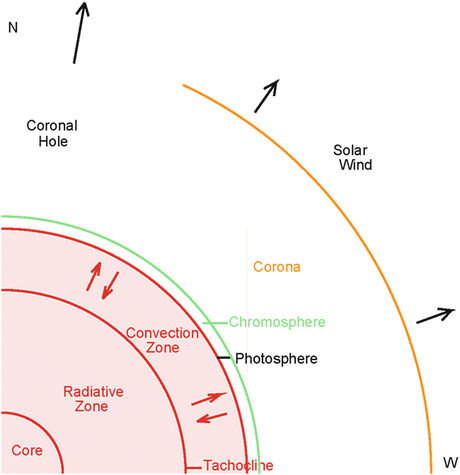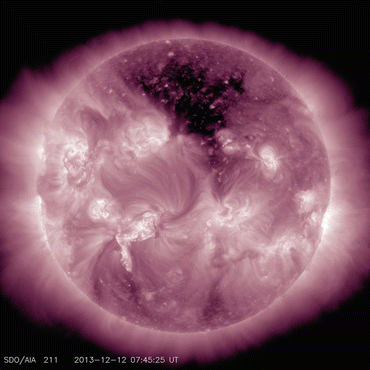1. Introduction
Abstract
The structure of the Sun, with its energy generation and heating, creates convection and differential rotation of the outer solar plasma. This convection and rotation generates the solar magnetic field. The field and its variations spawn all of the solar activity: solar active regions, flares, jets, and coronal mass ejections (CMEs). Solar activity provides the origin and environment for both the impulsive and gradual solar energetic particle (SEP) events. This chapter introduces the background environment and some basic properties of SEP events, time durations, abundances, and solar cycle variations.
We tend to think of the Sun as an image of its disk. Recent years have brought increasingly sophisticated images of that disk in single spectral lines and images of active emissions from its corona. However, we have no such images of solar energetic particles (SEPs). In a photon-dominated discipline, SEPs are stealthy and obscure; they do not brighten the solar sky. While photons travel line-of-sight, SEPs are guided out to us along magnetic field lines. We must identify, measure, and count SEPs one by one. Only in recent years have we overcome the limitations so our observations now begin to bear richer fruit. This is the story of that development.
Solar energetic particles (SEPs) come as bursts of high-energy particles from the direction of the Sun lasting for hours or sometimes days. The particle energies range from about 10 keV (kilo electron volts) to relativistic energies of several GeV, particle speeds 90% of the speed of light. In addition to the dominant protons and electrons, most of the other chemical elements from He through Pb have now been measured. The relative abundances of these elements and their isotopes have been a powerful resource in our quest for understanding of the physical processes of acceleration and interplanetary transport of SEPs.
In this chapter we introduce properties of SEPs after reviewing some properties of the solar and interplanetary environment in which they are found.
1.1 The Structure of the Sun
With a mass of 1.989 1033 g, the Sun consists of gaseous, ionized plasma where the inner core (see Fig. ) reaches temperatures of 15 million degrees Kelvin (MK) where some of the protons have enough energy to tunnel the Coulomb barrier of the nuclear charge. As they penetrate H, C, and N nuclei, they cause the nuclear reactions that catalyze the conversion of H into He. The energy released in this process is radiated and reabsorbed as it diffuses outward across the radiative zone , creating sufficient heat and pressure to balance the gravitational force trying to collapse the star.
Fig. 1.1
A cross section of the Sun shows its major radial structure from the core to the evaporating solar wind. (If we look at the Sun with North at the top and South at the bottom , West is to the right and East to the left . The solar limb is the edge of the visible disk.)
Circulation of the hot plasma across the convection zone brings energy to the photosphere , that surface where overlying material is too thin to absorb radiation or prevent its escape out into space. Here radiation of energy cools the region just above the photosphere to about 4000 K. At this temperature, elements with a first ionization potential (FIP) below about 10 eV, just below that of H at 13.6 eV, remain ionized, while those with higher FIP capture and retain electrons to become neutral atoms.
Above the photosphere lies the narrow chromosphere where the temperature rapidly rises again to over 1 MK in the solar corona which extends outward another solar radius or so. The corona is probably heated by absorption of Alfvn waves, plasma waves created in the turbulent layers below, and is largely contained by closed magnetic loops. The outer layer of the corona evaporates to become the 400800 km s1 solar wind which continues to blow past the Earth at 1 AU and far beyond the planets to nearly 100 AU. Properties of the solar wind were predicted by Parker () before it was observed.
Inside the tachocline , which lies at the base of the convective zone, the Sun rotates like a rigid body, but throughout the convective zone the Sun rotates differentially , faster at the equator than at the poles. The sidereal period of solar rotation at the equator is 24.47 days but it is 25% longer at latitude 60. Azimuthal surfaces of constant rotation-speed run radially through the convection zone forming conical shells about the rotation axis that extend only to the tachocline and not to their apex at the center of the Sun.
1.2 The Solar Magnetic Field
The Sun has a magnetic field that is generally dipolar in nature, although its origin is still not perfectly understood (see Parker ) as they are sheared and reconnected by the differential rotation . Active regions tend to occur at mid-latitudes on the Sun where the effect of differential rotation on field generation is greatest. When oppositely directed fields reconnect in a largely collisionless regime of the corona, the magnetic energy can be converted to energy of SEPs, with especially copious electrons. On closed magnetic loops, this can result in sudden heating and X-ray production, mainly by electron Bremstrahlung, which is seen as a solar flare . Similar reconnection on open field lines, jets , can release electrons and ions into space, i.e. accelerate an impulsive SEP event, without the trapping or heating, as we shall see. As electrons stream out along open field lines they produce fast-drift type-III radio bursts.
Fig. 1.2
An image of the Sun in 211 UV light, taken by the Atmospheric Imaging Assembly on the Solar Dynamics Observatory , shows brightening of magnetically-complex active regions and a large, dark coronal hole
Figure are active regions while the large dark region on the solar image is a coronal hole . Coronal holes, often seen near the poles, are regions of open magnetic field lines extending into the outer heliosphere, stretched out by the plasma of the solar wind. The bright regions contain locally closed field lines, i.e. loops, where any accelerated particles are contained and interact so that heating is greatly increased.
Of course, Maxwells Equations tell us that all magnetic-field lines are closed . However, some field lines are drawn far out into the outer heliosphere by coronal mass ejections (CMEs) and the solar wind. For purposes of energetic-particle flow, we describe those field lines as open if they can conduct charged particles out from the Sun to an observer at or beyond Earth.
The direction of the solar dipolar magnetic field reverses in a cycle of one reversal in about 11 year and solar activity increases as the field reverses. Solar minima occur when the field axis is aligned with the solar rotation axis, in one polarity or the other, and the number and size of active regions decreases dramatically. Solar maxima occur during intermediate times and the Sun appears as in Fig. late in 2013. During solar minimum the northern hemisphere contains nearly radial field lines of one polarity while the southern hemisphere contains the other; the hemispheres are separated by a plane (or wavy) current sheet, between the opposite field polarities, extending out into interplanetary space near the equator. High-speed solar wind (~700800 km s1) emerges from the polar coronal holes.













